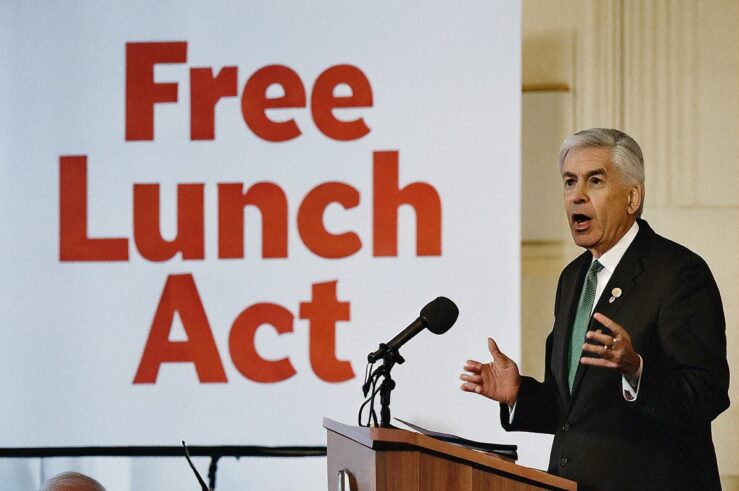Earlier this week the International Center for Law & Economics, along with a group of prominent professors and scholars of law and economics, filed an amicus brief with the Ninth Circuit seeking rehearing en banc of the court’s FTC, et al. v. St Luke’s case.
ICLE, joined by the Medicaid Defense Fund, also filed an amicus brief with the Ninth Circuit panel that originally heard the case.
The case involves the purchase by St. Luke’s Hospital of the Saltzer Medical Group, a multi-specialty physician group in Nampa, Idaho. The FTC and the State of Idaho sought to permanently enjoin the transaction under the Clayton Act, arguing that
[T]he combination of St. Luke’s and Saltzer would give it the market power to demand higher rates for health care services provided by primary care physicians (PCPs) in Nampa, Idaho and surrounding areas, ultimately leading to higher costs for health care consumers.
The district court agreed and its decision was affirmed by the Ninth Circuit panel.
Unfortunately, in affirming the district court’s decision, the Ninth Circuit made several errors in its treatment of the efficiencies offered by St. Luke’s in defense of the merger. Most importantly:
- The court refused to recognize St. Luke’s proffered quality efficiencies, stating that “[i]t is not enough to show that the merger would allow St. Luke’s to better serve patients.”
- The panel also applied the “less restrictive alternative” analysis in such a way that any theoretically possible alternative to a merger would discount those claimed efficiencies.
- Finally, the Ninth Circuit panel imposed a much higher burden of proof for St. Luke’s to prove efficiencies than it did for the FTC to make out its prima facie case.
As we note in our brief:
If permitted to stand, the Panel’s decision will signal to market participants that the efficiencies defense is essentially unavailable in the Ninth Circuit, especially if those efficiencies go towards improving quality. Companies contemplating a merger designed to make each party more efficient will be unable to rely on an efficiencies defense and will therefore abandon transactions that promote consumer welfare lest they fall victim to the sort of reasoning employed by the panel in this case.
The following excerpts from the brief elaborate on the errors committed by the court and highlight their significance, particularly in the health care context:
The Panel implied that only price effects can be cognizable efficiencies, noting that the District Court “did not find that the merger would increase competition or decrease prices.” But price divorced from product characteristics is an irrelevant concept. The relevant concept is quality-adjusted price, and a showing that a merger would result in higher product quality at the same price would certainly establish cognizable efficiencies.
* * *
By placing the ultimate burden of proving efficiencies on the defendants and by applying a narrow, impractical view of merger specificity, the Panel has wrongfully denied application of known procompetitive efficiencies. In fact, under the Panel’s ruling, it will be nearly impossible for merging parties to disprove all alternatives when the burden is on the merging party to address any and every untested, theoretical less-restrictive structural alternative.
* * *
Significantly, the Panel failed to consider the proffered significant advantages that health care acquisitions may have over contractual alternatives or how these advantages impact the feasibility of contracting as a less restrictive alternative. In a complex integration of assets, “the costs of contracting will generally increase more than the costs of vertical integration.” (Benjamin Klein, Robert G. Crawford, and Armen A. Alchian, Vertical Integration, Appropriable Rents, and the Competitive Contracting Process, 21 J. L. & ECON. 297, 298 (1978)). In health care in particular, complexity is a given. Health care is characterized by dramatically imperfect information, and myriad specialized and differentiated products whose attributes are often difficult to measure. Realigning incentives through contract is imperfect and often unsuccessful. Moreover, the health care market is one of the most fickle, plagued by constantly changing market conditions arising from technological evolution, ever-changing regulations, and heterogeneous (and shifting) consumer demand. Such uncertainty frequently creates too many contingencies for parties to address in either writing or enforcing contracts, making acquisition a more appropriate substitute.
* * *
Sound antitrust policy and law do not permit the theoretical to triumph over the practical. One can always envision ways that firms could function to achieve potential efficiencies…. But this approach would harm consumers and fail to further the aims of the antitrust laws.
* * *
The Panel’s approach to efficiencies in this case demonstrates a problematic asymmetry in merger analysis. As FTC Commissioner Wright has cautioned:
Merger analysis is by its nature a predictive enterprise. Thinking rigorously about probabilistic assessment of competitive harms is an appropriate approach from an economic perspective. However, there is some reason for concern that the approach applied to efficiencies is deterministic in practice. In other words, there is a potentially dangerous asymmetry from a consumer welfare perspective of an approach that embraces probabilistic prediction, estimation, presumption, and simulation of anticompetitive effects on the one hand but requires efficiencies to be proven on the other. (Dissenting Statement of Commissioner Joshua D. Wright at 5, In the Matter of Ardagh Group S.A., and Saint-Gobain Containers, Inc., and Compagnie de Saint-Gobain)
* * *
In this case, the Panel effectively presumed competitive harm and then imposed unduly high evidentiary burdens on the merging parties to demonstrate actual procompetitive effects. The differential treatment and evidentiary burdens placed on St. Luke’s to prove competitive benefits is “unjustified and counterproductive.” (Daniel A. Crane, Rethinking Merger Efficiencies, 110 MICH. L. REV. 347, 390 (2011)). Such asymmetry between the government’s and St. Luke’s burdens is “inconsistent with a merger policy designed to promote consumer welfare.” (Dissenting Statement of Commissioner Joshua D. Wright at 7, In the Matter of Ardagh Group S.A., and Saint-Gobain Containers, Inc., and Compagnie de Saint-Gobain).
* * *
In reaching its decision, the Panel dismissed these very sorts of procompetitive and quality-enhancing efficiencies associated with the merger that were recognized by the district court. Instead, the Panel simply decided that it would not consider the “laudable goal” of improving health care as a procompetitive efficiency in the St. Luke’s case – or in any other health care provider merger moving forward. The Panel stated that “[i]t is not enough to show that the merger would allow St. Luke’s to better serve patients.” Such a broad, blanket conclusion can serve only to harm consumers.
* * *
By creating a barrier to considering quality-enhancing efficiencies associated with better care, the approach taken by the Panel will deter future provider realignment and create a “chilling” effect on vital provider integration and collaboration. If the Panel’s decision is upheld, providers will be considerably less likely to engage in realignment aimed at improving care and lowering long-term costs. As a result, both patients and payors will suffer in the form of higher costs and lower quality of care. This can’t be – and isn’t – the outcome to which appropriate antitrust law and policy aspires.
The scholars joining ICLE on the brief are:
- George Bittlingmayer, Wagnon Distinguished Professor of Finance and Otto Distinguished Professor of Austrian Economics, University of Kansas
- Henry Butler, George Mason University Foundation Professor of Law and Executive Director of the Law & Economics Center, George Mason University
- Daniel A. Crane, Associate Dean for Faculty and Research and Professor of Law, University of Michigan
- Harold Demsetz, UCLA Emeritus Chair Professor of Business Economics, University of California, Los Angeles
- Bernard Ganglmair, Assistant Professor, University of Texas at Dallas
- Gus Hurwitz, Assistant Professor of Law, University of Nebraska-Lincoln
- Keith Hylton, William Fairfield Warren Distinguished Professor of Law, Boston University
- Thom Lambert, Wall Chair in Corporate Law and Governance, University of Missouri
- John Lopatka, A. Robert Noll Distinguished Professor of Law, Pennsylvania State University
- Geoffrey Manne, Founder and Executive Director of the International Center for Law and Economics and Senior Fellow at TechFreedom
- Stephen Margolis, Alumni Distinguished Undergraduate Professor, North Carolina State University
- Fred McChesney, de la Cruz-Mentschikoff Endowed Chair in Law and Economics, University of Miami
- Tom Morgan, Oppenheim Professor Emeritus of Antitrust and Trade Regulation Law, George Washington University
- David Olson, Associate Professor of Law, Boston College
- Paul H. Rubin, Samuel Candler Dobbs Professor of Economics, Emory University
- D. Daniel Sokol, Professor of Law, University of Florida
- Mike Sykuta, Associate Professor and Director of the Contracting and Organizations Research Institute, University of Missouri
The amicus brief is available here.




